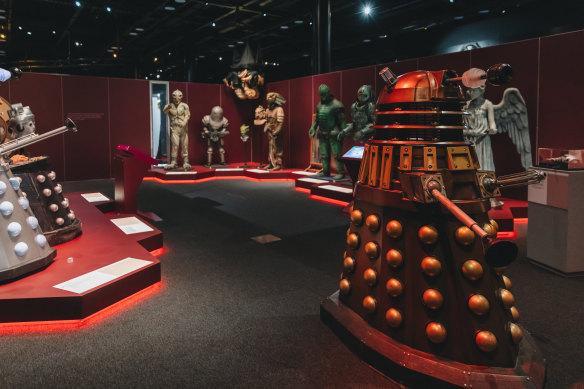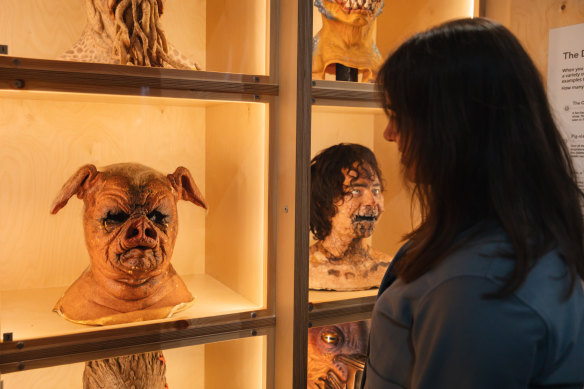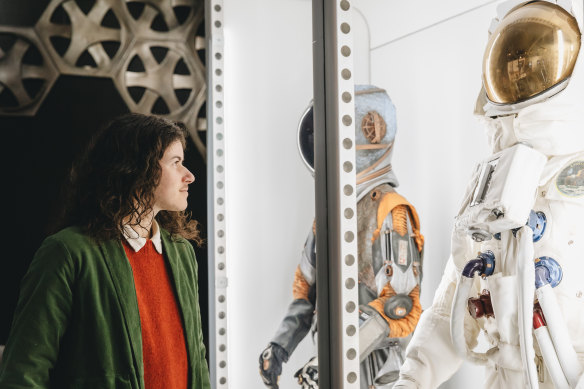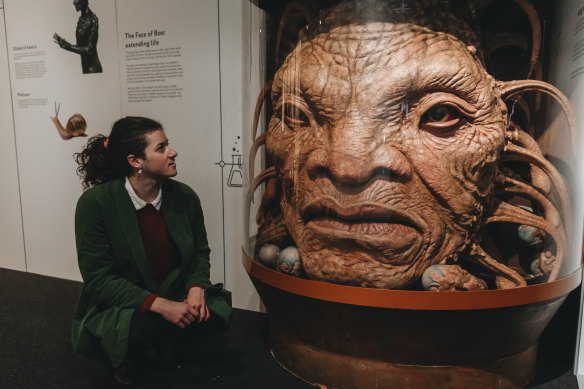Move over, hobbits, the Time Lord has arrived in the Southern Hemisphere
By Tim Richards
The time machine’s controls gleam before me, as the central rotor turns slowly within its transparent housing.

Exterminate! Daleks invade New Zealand.
I’m in the TARDIS! It’s something I’ve wanted to do since I was a kid in the 1960s, when the BBC science fiction show Doctor Who started screening on Australian TV. Since then, the Doctor – the travelling alien who’s the star of the show, righting wrongs across the universe – has been a hero of mine, and possibly the reason I became so keen on travel as an adult.
And here I am at last, in the Time Lord’s presence. Or, to be truthful, within the next best thing – Doctor Who: Worlds of Wonder. This exhibition devoted to the program has left the UK for the first time to go on show in Wellington, New Zealand. And the Takina Convention and Exhibition Centre, which opened in 2023, has just the right futuristic lines for this role.
There are plenty of costumes and props from Doctor Who on display, but there’s also a deeper purpose to the exhibition: to show how real-world science has been used by the show’s writers and designers to create onscreen creatures and sets.
A video introduction by writer and actor Mark Gatiss leads me onward to the TARDIS Tech Room, where a case full of “sonic screwdriver” props is linked with the use of ultrasonic sound in the real world. On a platform stands an array of robots of varying sizes – including the towering robot used in Tom Baker’s first story as the Doctor back in 1974 and the famous K9, a robot dog who tagged along with the Time Lord some years later.

The Monster Vault is full of scary monsters that appeared in the TV series.
A room labelled Cosmic Curiosities covers such topics as black holes and survival in space, with a selection of spacesuits used onscreen on display. There’s also the costume worn by Omega, the Time Lord said to have helped harness the power of a star to allow his people to travel through time. A fun hands-on item is a Dalek voice recorder, which turns my recorded speech into the harsh, grating tones of the cyborgs who are the Doctor’s greatest enemies.

A room labelled Cosmic Curiosities has a selection of spacesuits used onscreen on display.
There’ll be more Daleks later, I suspect. But now I move to a room devoted to Doctor Who’s connection to life sciences. Past the costume worn by Karvanista, a dog-like alien biologically driven to protect humans – somewhat like our domestic dogs – there’s a fascinating touchscreen connecting environmental topics to specific episodes. Pollution, epidemics, eco-disasters: they’ve all been grist to Doctor Who’s mill over the decades (who can forget the creepy giant maggots featured in The Green Death, a 1973 anti-pollution story with Jon Pertwee as the Doctor?).
Finally, it’s time for a major highlight, the Monster Vault. Doctor Who is famous for its scary monsters, and they’re well represented in this central space: as I glance around I can see Daleks (of course), Cybermen, Ice Warriors, a Sontaran, a Weeping Angel and many more intimidating foes.
Moving on, another touchscreen allows me to draw links between the show’s aliens and life forms they were based on, such as whales, birds, insects and plants. There’s also a section about communication with aliens, and reminiscences by those who’ve worked on the show.
Then, near the exhibition’s end, I’m halted by a speaking replica of the far-future Lady Cassandra, who styles herself as the last human and boasts about how thin she is – because she’s just a single sheet of flesh with a face, stretched inside a frame. Nearby is an ″emojibot”, a robot with a shifting emoji face whose AI interface went haywire and became deadly to humans.

“The Face of Boe”. Some of Doctor Who’s characters are not for the faint-hearted.
An extreme obsession with thinness, and potential drawbacks of AI? Sounds like Doctor Who has had its finger on the human pulse all along.
The details
Fly & ride
Air New Zealand flies to Wellington, see airnewzealand.com.au
Wellington can also be reached by train from Auckland, see greatjourneysnz.com
Stay
Ohtel Wellington is a comfortable place to stay within walking distance of the exhibition and dining options. Rooms from $NZ275 ($251) a night. See ohtel.nz
Tour
Doctor Who: Worlds of Wonder runs to 28 October 2024. It costs $NZ29.90, and concession and family tickets are available. See wellingtonnz.com/visit/events/doctor-who-worlds-of-wonder
More
wellingtonnz.com
The writer was hosted by WellingtonNZ.
Sign up for the Traveller Deals newsletter
Get exclusive travel deals delivered straight to your inbox. Sign up now.